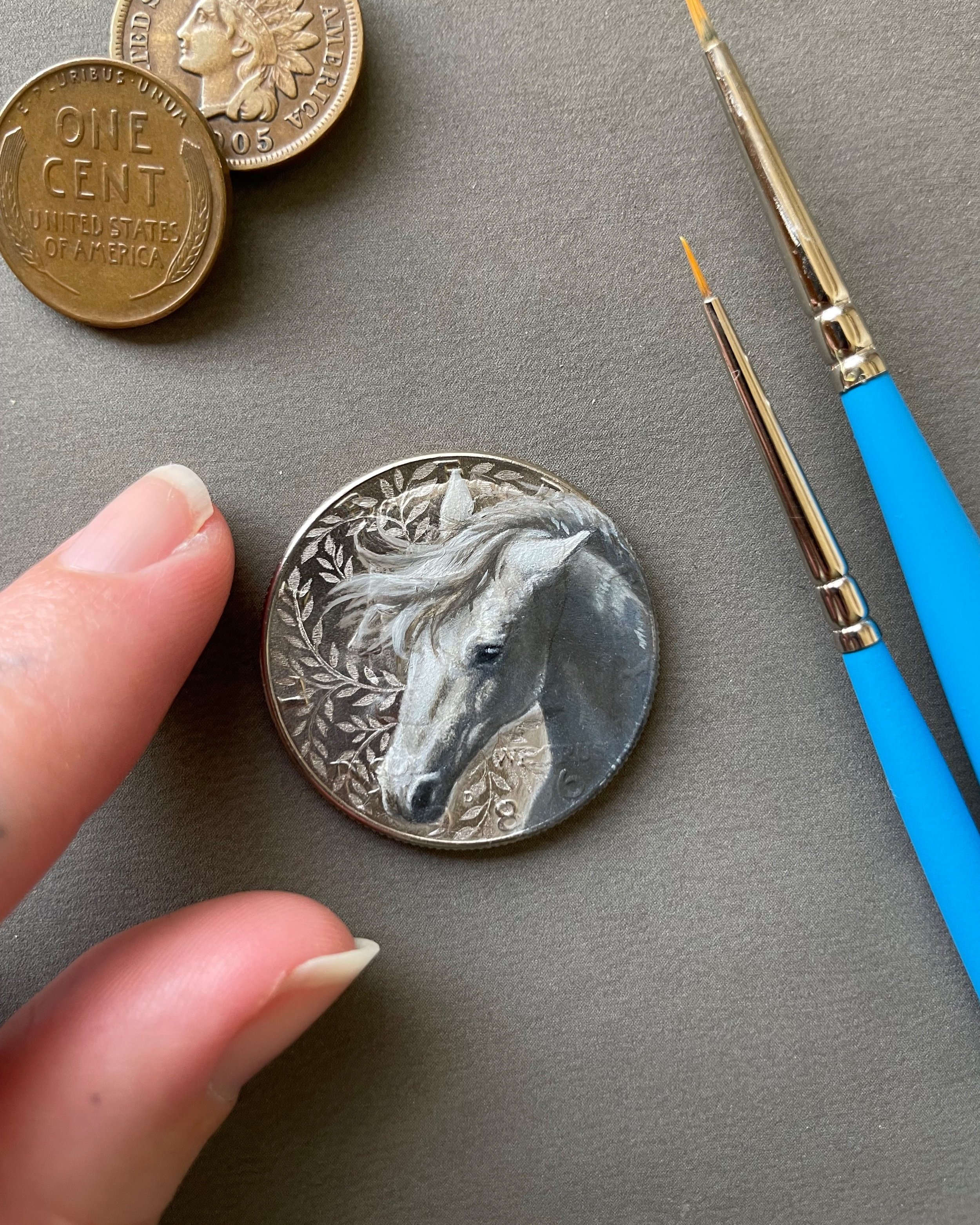Answering Your Questions
While most people see pennies as mere small change, to me, they represent a canvas filled with boundless potential. Many have asked me about the motivation and techniques behind my penny paintings. I've taken some of the most frequently asked questions and answered them here, to give you a peek into my unique world of art.
1. Why Paint on a Penny?
The allure of copper is not new to me. As a favored painting surface, I was drawn to its unique charm. But when I ventured into the realm of miniature painting, I faced a challenge: finding copper sheets as petite as I desired. That's when a jar filled with loose change in my studio became my unexpected muse. After the first coin was painted, there was no turning back.
2. Do I Prep the Penny?
The richness of copper pairs seamlessly with oils. Thus, my preparation is minimal. All I ensure is a thorough cleansing of the coin, washing away decades of its adventures and countless fingerprints.
3. Do I Use a Magnifying Glass?
Many assume that a magnifying glass is my trusted companion. However, I find it more of a distraction. My trust lies in petite brushes and the glow of bright lights that help me delve into the fine details.
4. What Kind of Brushes Do You Use?
Starting with a 3/0 brush during the initial layout, I shift to brushes as tiny as 20/0 to perfect the intricate details that breathe life into my paintings.
5. What’s My Inspiration?
The world of art has seen many greats, and I draw my inspiration from legends like Elizabeth LeBrun, Sargent, and Bouguereau. Among the miniature painters, Samuel Cooper and Pieter De Neefs have my utmost admiration.
6. Painting Over Lincoln, Is It Hard?
The familiar visage of Lincoln on the penny presented an initial challenge, given the inherent texture. But with time, he became an integral part of my narrative. Now, I meticulously select scenes that harmonize with his features, making him a co-star in my miniature tales.
7. But Is It Legal?
Is it illegal to paint on coins? In the U.S., artistic endeavors using coins are not uncommon. Think of the penny pressing machines in theme parks or coins adorned as jewelry. While there are laws guarding against defacing U.S. currency, they mainly target fraudulent activities, not artistry.
The world of penny painting is as intricate as the details on each coin. It's a journey of passion, precision, and a penchant for the extraordinary. And while these answers provide a glimpse into my process, the true magic lies in every stroke, every hue, and every coin that gets transformed into a piece of art.

